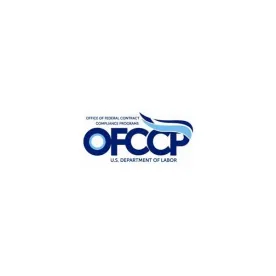The Office of Federal Contract Compliance Programs (OFCCP) published its final rule establishing consistent evidentiary parameters for the way it determines preliminary findings of discrimination against contractors during compliance evaluations and investigations. The final rule provides contractors with more certainty regarding the OFCCP’s operative standards and establishes guardrails on the agency’s issuance of Predetermination Notices, which notify contractors of its preliminary determination of employment discrimination and thereafter an opportunity for prompt resolution prior to the agency issuing a Notice of Violation.
OFCCP Final Rule Regarding Findings of Discrimination
Codifying Director Craig Leen’s agency guidelines and frequent directives, the OFCCP explained it published this rule to increase clarity and transparency for federal contractors, establish clear parameters for OFCCP resolution procedures, and enhance the efficient enforcement of equal employment opportunity laws. Although met with objections by workers advocacy groups, the rule is purportedly designed to increase the number of contractors the agency evaluates by focusing on resolving stronger cases through the strategic allocation of limited agency resources.
Effective December 10, 2020, if a compliance review or other review by OFCCP indicates evidence sufficient to support a preliminary finding of disparate treatment and/or disparate impact discrimination, the OFCCP may issue a Predetermination Notice only after satisfying the three elements below and obtaining the approval of the Director or acting agency head:
-
Providing quantitative (statistical) evidence
-
Demonstrating that the unexplained disparity is practically significant
-
Providing qualitative (descriptive) evidence that, in combination with other evidence, supports both a finding of discriminatory intent by the contractor and a finding that the contractor’s discriminatory intent caused the disparate treatment
Such evidentiary mandates will be welcome news to contractors who have historically struggled to obtain specific statistical evidence from the OFCCP with respect to compensation analysis (despite OFCCP Directive 2018-05) and/or adverse impact analyses regarding review of hiring, promotion or termination decisions. Additionally, requiring a demonstration of “practical significance” will finally resolve whether the agency will proceed with claims of discrimination where such small statistical indicators exist that there is no practical outcome.
Notably, the OFCCP may also issue a Predetermination Notice under a disparate treatment theory of liability without satisfying all three components listed above provided one of the following is true:
-
The qualitative evidence by itself is sufficient to support a preliminary finding of disparate impact.
-
The evidence of disparity between a favored and disfavored group is so extraordinarily compelling that by itself it is sufficient to support a preliminary finding of disparate treatment.
-
Quantitative evidence of discrimination exists and the contractor denied OFCCP access to sources of evidence that may be relevant to a preliminary finding of discriminatory intent (e.g., the contractor denied OFCCP access to its employees during a compliance evaluation or destroyed or failed to produce records the contractor is legally required to create and maintain).
The Predetermination Notice must disclose the quantitative and qualitative evidence relied on by OFCCP in sufficient detail to allow contractors to investigate allegations and meaningfully respond within 30 calendar days of receipt of the Notice (which deadline the OFCCP may extend for good cause).
The OFCCP defines “quantitative evidence” as hypothesis testing, controlling for the major, measurable parameters and variables used by the contractor (including, as appropriate, preferred qualifications, other demographic variables, test scores, geographic variables, performance evaluations, years of experience, quality of experience, years of service, quality and reputation of previous employers, years of education, years of training, quality and reputation of credentialing institutions, etc.). Quantitative evidence is used to confirm the probability of outcomes occurring by chance and/or analyses reflecting statements concluding that a disparity in employment selection rates or rates of compensation is statistically significant.
The OFCCP defines “qualitative evidence” as including such things as testimony, interview statements, and documents about biased statements, remarks, attitudes, or acts based upon membership in a protected class, particularly when made by a decision maker involved in the action under investigation. Qualitative evidence may also include information or statements regarding the conduct of persons involved in making employment decisions, particularly when it is alleged that discretion or subjectivity has been used to discriminate based on a protected characteristic.
Theoretically, the rule should provide contractors additional information prior to the agency issuing a Notice of Violation, thereby permitting contractors an opportunity to refute any initial determination made by the OFCCP. Whether the OFCCP’s ultimate findings exceed “unwarranted assumptions” based on statistical evidence and anecdotal accounts to demonstrate discrimination on a systemic basis in accordance with Title VII requirements — as recently reminded in OFCCP v. Oracle America, Inc., 2017-OFC-00006 (2020) — remains to be seen.






 />i
/>i

